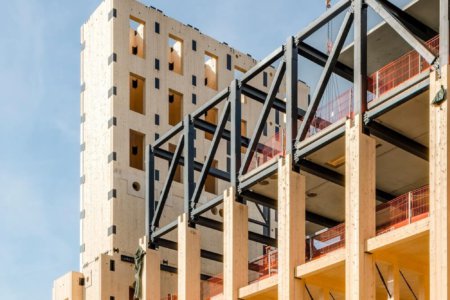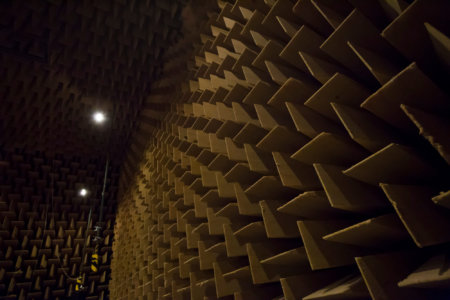For Teanette van der Spuy, the road from her home country of South Africa to Sweden –– where the Chalmers University of Technology is located –– was extremely clear. During her undergraduate years, she discovered her passion for Microwave Engineering. In this time, she visited a radio astronomy observatory, where she realised that engineers face unique challenges every day and overcoming them entails clever methods only a world-class education can teach.
The university’s Wireless, photonics and space engineering, MSc programme sealed the deal. “Not only does it cover all my specific interests (communications, microwave sensing, space observation), but it also offers a unique association with the Onsala Space Observatory,” she explains.
The programme Spuy speaks of was designed to produce technology innovators whose creations will serve as core engines to cell phones, antennas, quantum computers, sensors, robots, communication systems and satellites of the future.
Especially in light of emerging infrastructure like data centres; 6G mobile communication networks, new applications like industrial automation; autonomous driving; as well as the space industry’s growing number of private businesses that offer new and ubiquitous satellite constellation services for global communications, navigation, Earth observation and space science ––– this postgraduate degree has never been more topical.
It aptly prepares learners to handle the advancements and provide solutions to future challenges. Pairing basic knowledge in photonic and microwave devices with a keen understanding of how these components work at the system level, every student is guaranteed industry-relevant expertise.

Chalmers has implemented smaller classroom sizes to not only ensure the health and safety of its students but to also provide more personalised attention in state-of-the-art spaces. Source: Chalmers University of Technology
Compulsory courses in Year 1 include: electromagnetic waves and components; wireless and photonics system engineering; microwave engineering; space science and techniques; as well as photonics and lasers.
Christian Fager –– Professor and Head of the Microwave Electronics Laboratory at the Department of Microtechnology and Nanoscience–– has led the course Wireless and Photonic System Engineering for approximately 12 years. His main goal is to keep it fresh. “I substantially updated the content at the very beginning,” he says:
“For example, lessons around analogue FM radios were replaced by digital and more modern techniques. Today 5G and 6G are important, so we cover that. Additionally, we invite guest speakers or industrial lecturers to give us updates on industry trends.”
For a more interdisciplinary experience, students can craft their own path by picking at least three out of 13 compulsory elective courses: active microwave circuits; electromagnetic sensor systems; antenna engineering; integrated photonics; radar systems and applications; design of MMIC; optoelectronics; satellite communication; semiconductor devices for modern electronics; millimetre wave and THz technology; fibre optical communication; satellite positioning; and wireless link project. All routes lead to a master’s thesis in Year 2.
Topical lessons kept Spuy engaged enough to reminisce her first year at Chalmers as “one of the most exciting times” of her life –– even in the midst of a pandemic. When comprehensive online lessons finally came to a close, she remembers her programme director hosting a class-wide lecture on everything Spuy and her peers should be looking forward to. “It was a relief to me that all classes would be in English!” she says.
Her first laboratory session was just as exciting, which entailed designing and constructing a hologram. The fact that the university implemented smaller classroom sizes –– to ensure the health and safety of its students –– only meant more personalised attention in state-of-the-art spaces.

With every minute spent in laboratories, students bear witness to the world-changing research conducted at Chalmers. Source: Chalmers University of Technology
“Chalmers has a wealth of laboratory resources and is well known for their excellent high-frequency circuit designs,” Spuy says. “I was particularly excited about the prospect of being able to fabricate and test my own high-frequency design projects.”
With every minute spent in laboratories, students bear witness to the world-changing research conducted at Chalmers. Every educator in the programme is an active researcher. Some can be found at the Department of Microtechnology and Nanoscience. Together and separately, they conduct application-oriented research on high-speed microwave and THz electronics. They also explore future communication and remote sensing applications, optoelectronics and fibre optics for long haul transmission and short-reach interconnects, THz imaging systems, and advanced receivers for space applications.
In the Department of Space, Earth and Environment, experts study microwave and optical remote sensing, space geodesy and radio astronomy. Several projects focus on Earth observation using satellites for climate and weather, e.g. measurements of atmospheric gases, forests and sea ice. A team is currently developing methods to quantify gas emission from active volcanoes –– providing information on ozone depletion and climate change in the process. Another project developed a method based on UV/visible light for quantifying hydrocarbon emission from oil-related industrial activities.

Onsala Space Observatory (OSO), the Swedish National Infrastructure for Radio Astronomy, provides scientists with equipment to study the Earth and the rest of the Universe. Source: Chalmers University of Technology
Meanwhile, at the Onsala Space Observatory –– a geodetic fundamental station –– the university operates several radio telescopes for astronomy and geodesy while taking part in international radio astronomical projects (e.g., EVN, ALMA and SKA).
With every discovery made within these spaces, the educational experiences of countless students are further enriched. “Since every lecture is presented by a professor from a research group, each session brings an astounding wealth of knowledge to the table,” enthuses Spuy.
“I found the laboratory in the millimetre wave and terahertz technology class to be exceptional. We had the opportunity to design their own terahertz waveguide twist and have it manufactured –– an opportunity which I don’t know if I will ever have again!”
With the Chalmers qualification she will soon receive in 2022, Spuy certainly will –– but this time, as an expert herself. To follow in her footsteps, click here to sign up for information about the two-year Wireless, photonics and space engineering, MSc today.
With a variety of scholarships available to overseas students, becoming a part of this renowned Swedish university has never been easier. All international students from outside the EU who submit a programme application are eligible to apply for financing that is valid for two years of study. Secure your place at this top Swedish University and apply for the course today.
Follow Chalmers University of Technology on Facebook, Instagram, Twitter, and YouTube












